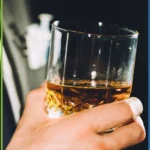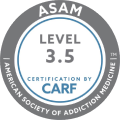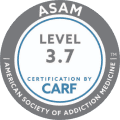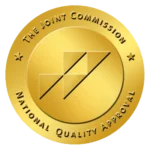
Naloxone, also known as Narcan, is the safest medicine that will help reverse the side effects of opioid overdose. It works best on opioids such as heroin, fentanyl, and prescription medications such as painkillers. Even at times, it is usable if opioids aren’t present and is safe to use. When you are concerned about opioid use and observe someone you know. Saving lives can be doable with the help of the opioid antagonist.
When a person has taken high doses of opiates, they must be taken to the hospital with the help of first responders. Meperidine is an opioid pain medication that requires treatment with Naloxone.
A physician will administer a naloxone prescription after finding that the patient has overdosed. In an emergency of an overdose of opiates, the naloxone auto-injector will be used to save the patient’s life. Naloxone is administered efficiently with its variants in nasal spray and an auto-injector.
Indication of Overdose
Those close to an individual struggling with an addiction should look out for symptoms of opioid misuse and seek treatment from a professional. Naloxone kits are proven effective in combating opioid overdose and saving lives when available in an emergency. This is why it is essential to be aware of the signs of an overdose.
Below are some of the most common signs that a person is experiencing an opioid overdose:
- Unresponsiveness and unconscious
- White, blue, or grey fingernails or lips
- Slowed breath, breathing halting
- Gurgling and snoring sounds.
- They experience chest pain
- Abnormally high body temperature
- Difficulty in walking
- Blood pressure issues
Public health and safety officers are learning to respond timely, as, in 2017, 19.8 percent of Americans died because of drug abuse. When a sufficient amount of Naloxone is administered, a person is brought back from their overdose, and their breathing will return to normal.
Naloxone is a counteract medication against the troubles of opiate overdose. From pain medications to illicit drugs, opioid use disorder can lead to death if not treated promptly. Naloxone and Naltrexone are common medications that refer to opioid receptors and rescue breathing.
The American Medical Association has shed light on the Naloxone importance requesting Biden Administration to remove the prescription requirement for Naloxone at pharmacies. The AMA has emphasized that the medication is highly effective in treatment, so it shall be available over the counter more easily.
Effects of Opioids Overdose
The opioid overdose cases have devastatingly emerged over the years. In 2019, nearly 50,000 people died because of opioid-related reasons. It is inevitable to bring Naloxone if you know your loved one is dealing with Opioid use disorder OUD. The prescribed medications are opioids that tend to relieve the pain and bring a euphoric reaction leading to addiction.
If you have an allergic reaction, Epinephrine is the proper medication to get you stabilized. A variety of drug combinations and drugs can be fatal as they lead to overdose. Opioids are highly detrimental to health. Many people begin using them for recreational purposes, and some do to treat ongoing illnesses.
Medications for Opioid Use Disorder
Buprenorphine with a combination of Naloxone can act to treat conditions such as dependence on opioids addiction. Naltrexone use for a long duration can be proven highly effective in treating opioid use.
Drugs like Narcan (Naloxone) are highly effective to be used before the first responders arrive. Naloxone is FDA approved drug to treat severe consequences of opioid overuse; it is a popular life saving medicine that comes under the brand name Narcan. Following the proper steps at the right time can help you to eliminate the effects of opiate overdose. Lucymyra is one of the medications the FDA has also approved for dealing with the withdrawal symptoms of opioids.
Within 30 to 90 minutes, Naloxone can bring a person breathing back to normal. In cases in which fentanyl and heroin are involved, there might be a need for an extra shot of Naloxone to recover a patient from such respiratory trouble. A Good Samaritan Law protects a bystander from arrest who report to 911 if there has been an overdose. Suboxone is also widely prescribed medication to those dealing with opioid addiction.
Harm Reduction Strategies
The grave circumstance is to limit drug use with the help of counseling sessions. From active emergency services to engaging with virtual programs can lead to preventive measures. For instance, distributing 100 Naloxone kits to a population of 100,000 can act for the reduction of nearly 46 percent of opioid overdose deaths.
Currently, 72 percent of preventable opioids death occur in people whose ages are around 25 years to 54 years. When individual prescriptions are no longer required for Naloxone, people will have better access to them.
Reducing the Stigma
When a patient enters a healthcare facility, there will be primary care units that don’t make a person perplexed. When an individual is there to receive treatment, their biggest hurdle is inconsistent questioning. The screening of a person for opioid treatment will be done in a way that their opioid use can be assessed and diagnosed correctly to create an effective treatment program. In many cases, there has been evidence that co-occurring mental illness or traumatic brain injury increases the chances of drug overdoses. It is a common concern for many as they want treatment without being bothered.
Medically assisted treatments such as methadone and buprenorphine that can be effective in treating heroin and other opiates can be proven very useful. A community solution for this is to distribute Naloxone and train people for its use as it only takes 5 minutes to learn the ways to administer the Naloxone. The use of Naloxone has been highly influential in coping with overdose issues.
Prepare Response Protocol Clinicians
The general public is also concerned about the increasing death rates due to opioid overdose and for that, preparing for emergency services is a vital element in saving lives. From administering Naloxone to knowing the overdose symptoms such as pinpoint pupils, breathing problems, and checking through chest compression with knuckles depending on the clinical practices and staff training. According to the U.S department of health and Human Services, 1.6 million people were involved in opioid use disorder (OUD) last year.
Dealing with Withdrawal Symptoms
When a person overdoses on opioids, even after administering Naloxone, the patients keep getting the withdrawal symptoms of the opiate for 30 to 90 minutes. Most people experience such a medical condition when struggling with breathing due to the overdose. After you start rescue breathing, it takes 2-3 minutes for them to get the normal breathing. Medical support for opioid conditions can save you from a bigger problem.
In emergency assistance, you must ensure that you cannot give the patient another dose to deal with withdrawal symptoms, which can lead to another overdose. Naloxone can displace the opioids attached to the brain reversing the effects of other opioids and their poisoning.
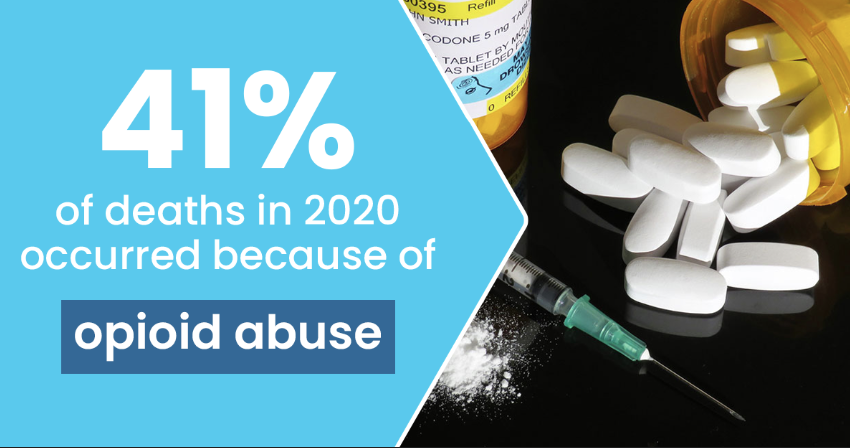
Frequently Asked Questions
Does naloxone reverse overdose?
After you are in the doldrums due to opiates, a high dosage of Naloxone can act as an opioid receptor as it helps to displace the opioids in the brain and ease a situation of overdose. Whether opioid is oxycodone, morphine, or heroin, naloxone act as an antagonist for blocking their effects.
How do paramedics stop an overdose?
If there has been an indication of overdose, the patient can get an intravenous dose of Naloxone for a quick reversal of side effects caused by the overdose. Before the paramedics arrive, the patient can get help to save their life. Paramedics can carry Naloxone to give a patient timely aid.
What exactly does Narcan do in the body to stop an overdose?
Narcan can help treat an overdose by blocking the receptors until the opioid can be broken down. Narcan can help in the prevention of the overstimulation of these receptors.
What is Naloxone, and why is it used?
Naloxone is an FDA-approved medication to help those dealing with an opioid problem. Moreover, it is a safe medication to use even when there aren’t opioids involved so that a patient won’t get hurt because of Naloxone.
Find Opioid Addiction Treatment at The Haven
Opioid overdose is a challenging situation to deal with for all parties involved. The Haven Detox treatment center is here to help. Our detox program provides a safe space full of medical professionals who guide you in safely and effectively ridding a substance from your system. The Haven offers various treatment programs for recovering from opioid addiction, alcohol addiction, etc. Find the treatment you need for life-threatening opioids at our treatment facility in Florida. Call us at 1 (561) 328-8627 for additional information.

